By: Josh Reed
Whether you’re someone like me who spends their entire Fall chasing whitetails, or someone who is interested in learning about the sport, there is always something new to learn that may give us the advantage we all need in the woods. I like to think about the difficulty of successfully harvesting a whitetail (especially with a bow) as one of the most challenging tasks an outdoorsman can face. I like to compare the art of remaining undetected by wildlife in the woods is just like successfully hiding in the corner of someone's living room and having them walk in and sit down without noticing your presence. So yes, to me it's much more than finding a good spot and sitting down. However, even though at times people do get lucky, there are so many variables that can happen and ruin a hunt in the blink of an eye. This is why it is essential to lean on people who share a common interest in the outdoors because you might learn a completely different approach or tactic that will get you out of a pinch, keep you safe, or help you punch your whitetail tags for years to come!
Our Hunt Lift Eat Community provides resources to help you train for your hunt, execute the hunt, and also get the job done of getting that animal from the field to your plate. We want to give you every possible advantage every time you venture out into the wild so that when you get your chance, you can seize that opportunity and put some hard earned meat on the table! For this article, I reached out to our Hunt Lift Eat Community of Team Members and asked them to give me tips and approaches on how they use the entire calendar to prepare for a fall/winter of chasing whitetails in all different types of climates and terrain.
What things can be done in the Spring to help you fill up the freezer with some fresh venison in the fall?
 -Use other seasons (such as Spring turkey season) to get boots on the ground and scout out your hunting area to try and gain as much intel as possible.
-Use other seasons (such as Spring turkey season) to get boots on the ground and scout out your hunting area to try and gain as much intel as possible.
-Hunt for sheds. Some whitetails shed their antlers as early as December, and others hold on to their antlers as late as mid to late March. Shed hunting is very beneficial to better scout your hunting land or new properties and become aware of what shooter bucks or promising up and comers made it through the season by finding their sheds. Also, shed hunting helps hunters become more familiar with deer travel patterns, bedding areas, food sources, and the location of that buck late in the season all by simply putting boots on the ground. Plus, it gives you a reason to be in the woods during the offseason, which is never a bad thing!
-The Spring and early Summer are also really important times to provide a salt or mineral lick for your whitetail population. During this time of year the fresh green forage that is essential in the whitetail's diet carries very high levels of potassium and water, which leads to the whitetail becoming sodium deficient. Certain minerals and vitamins are very important in assisting antler growth for bucks (they store calcium and phosphorus in their bones and can easily transfer these during antler growth). Also, calcium and phosphorus play a huge part in bone development for fawns and milk production for does. This all means that providing extra salt and minerals will lead to an all-around healthier deer herd.
What tactics can you use during the summer months to gear up and prepare for the upcoming season?
 For me, the summer months are all about preparation so that when Kentucky's September bow season comes in, I am ready to step in the woods and get the job done. There are several things that I like to do to gear up for the coming season.
For me, the summer months are all about preparation so that when Kentucky's September bow season comes in, I am ready to step in the woods and get the job done. There are several things that I like to do to gear up for the coming season.
-Practice, practice, practice. No matter what bow set up or equipment you're going to be using, make sure that you are comfortable and confident before stepping in the woods. As a hunter, you owe it to the animal you are pursuing to be completely dialed in and shooting straight so that you can execute a quick and ethical harvest. The Summer months are a great time to get out of the house with your hunting buddies and sling some arrows.
-Get boots on the ground and scout. Early in the year, deer are still in their Summer feeding patterns and bucks will hang out together in what are called Bachelor Groups. This is a great time to get some good optics and get a good look at the bucks that will be frequenting your hunting property in the months to follow.
 -The Summer months are also a great time to get trail cameras out on your properties to try and get an idea of what deer are frequenting the areas, when are they up and moving, what directions are they coming from, and where are their bedding areas? All of the information you can gather during the Summer will help you greatly during the season. For example, if I know where the deer are bedding, I can base my hunting tactics off the wind and make sure that my scent is blowing away from the deer's comfort zone. Scent control and wind direction are directly related to success.
-The Summer months are also a great time to get trail cameras out on your properties to try and get an idea of what deer are frequenting the areas, when are they up and moving, what directions are they coming from, and where are their bedding areas? All of the information you can gather during the Summer will help you greatly during the season. For example, if I know where the deer are bedding, I can base my hunting tactics off the wind and make sure that my scent is blowing away from the deer's comfort zone. Scent control and wind direction are directly related to success.
What is your approach during the early season and pre-rut months?
-Hunting mostly hardwoods in Kentucky, I focus on the acorn crop for that year and if you can find what acorns are falling, you will find deer. In years where the crop is really good, it'll sound like it's raining in the woods from the acorns falling to the ground. If you can get in a spot where they are falling, you're in good shape.
-In my region, once you hit October, deer patterns start to change as the deer begin to prepare for the rut. Bucks will change their movement patterns and will get up and start cruising for does. During the pre-rut phase, most bucks will hit the woods and limit time in crop fields and open terrain and as hunters we have to adapt to this phase and change our approach. You may have some success, but you also may see some limited movement if you keep hunting the same area you did in September.
-During this time, buck sign typically starts to pop up all over the place. This is when you will start seeing more rubs and scrapes show up. In my advice, find a fresh scrape line and hunt it really hard! Also, setting up some trail cameras to see what bucks are frequenting these scrapes will make for some great intel and some really cool footage.
 What is your best tip or advice when it comes to hunting the rut?
What is your best tip or advice when it comes to hunting the rut?
-For whitetail deer hunters you have a couple days throughout the year that you circle on the calendar, and I'm not talking about Christmas. Around my neck of the woods, the days that cause us to lose sleep the night before (like a little kid on Christmas Eve) are opening day of archery season in September, opening day of rifle season in November, and the entire month of November. The rut! During the rut, you can take everything you've done previously and throw it out the window. The whitetail rut is the best time of the year to be in the woods because you just absolutely never know what's going to happen at any given time. You could have not seen a deer in a week and within 10 seconds have a hot doe and 3-4 bucks fighting and chasing her right in front of your tree stand. Bucks are fighting and chasing does, deer are on their feet, the weather is getting cold. Man, how can you beat that?
 -So how should your approach change during the rut? For me, I do a couple things. First, more time in the woods. If you ever can work up the patience to do an all day sit in the deer woods, do it during the rut. Like I mentioned before, anything can happen at any given time right? Mature bucks will be up and moving at any time during this phase so if you leave at 10am to go get some lunch, your target buck might cruise by at noon while you're eating a bologna sandwich at deer camp and swapping stories from the morning's hunt. Trust me, it's happened before. Secondly, during the rut I like to set up in known travel corridors between water sources and bedding areas. On the terrain I'm hunting, when bucks are up cruising for does they will stick to these high travel areas like natural flats, benches, and/or loggin' roads. I have a couple stands that I would consider prime rut hunting stands for these exact reasons.
-So how should your approach change during the rut? For me, I do a couple things. First, more time in the woods. If you ever can work up the patience to do an all day sit in the deer woods, do it during the rut. Like I mentioned before, anything can happen at any given time right? Mature bucks will be up and moving at any time during this phase so if you leave at 10am to go get some lunch, your target buck might cruise by at noon while you're eating a bologna sandwich at deer camp and swapping stories from the morning's hunt. Trust me, it's happened before. Secondly, during the rut I like to set up in known travel corridors between water sources and bedding areas. On the terrain I'm hunting, when bucks are up cruising for does they will stick to these high travel areas like natural flats, benches, and/or loggin' roads. I have a couple stands that I would consider prime rut hunting stands for these exact reasons.
-Also, hunt the wind and use the wind to your advantage. First off, if the wind isn't right for your set up, don't force the issue. You'd be much better off hunting another area with the right wind than hunting where you really want to be with the wrong wind. There's a reason those mature bucks get as old and big as they do, and it isn't because they're stupid. During the rut, mature bucks will cruise to the downwind side of known bedding areas to check to see if any does are ready to be bred. So sitting on the downwind side of doe bedding can not only be essential to keeping you undetected, but it can be a productive way for you to cross paths with a mature buck cruising and checking out bedding areas for a hot doe.
-Those mature bucks have one thing on their mind, how do you capitalize on their mistakes? If you find the does, you will find the bucks looking for does. When in doubt, if the rut is on, get in the woods!
What is your approach during the late season and post-rut months?
-So what if you've put in all of the hard work and preparation, but didn't get the job done during early season, pre-rut, or the rut? Well don't worry, you still have a great opportunity to have success in the deer woods during the late or post-rut phase.
-In my experiences, this is where the deer start to transition back into their feeding patterns that, even though they might not be exactly the same, are quite similar to the pattern they had during the summer and early season. In Kentucky, this phase occurs around December when archery season is still open and we also have a late muzzleloader season right before Christmas. My best advice during this phase is that if you can find the food, you will find deer. Bucks will lose significant amounts of body fat due to their behavior patterns in the rut and will use the late season to replenish their bodies and recover from the previous month of fighting, chasing does, and breeding.
 -So, what about a secondary rut? This occurs when a mature doe does not get bred when she comes in the heat the first go around, the cycle will start over around 28-30 days later. So even though the main phase of rut may be over, some does will be coming into heat again which will cause the secondary rut and another round of breeding activity.
-So, what about a secondary rut? This occurs when a mature doe does not get bred when she comes in the heat the first go around, the cycle will start over around 28-30 days later. So even though the main phase of rut may be over, some does will be coming into heat again which will cause the secondary rut and another round of breeding activity.
-Also, a doe fawn will not go into heat and be ready for breeding until about 6 months after they are born and they reach a certain body weight. This means that with a whitetail gestation period of roughly 200 days, some does that were bred later the previous year will not give birth until May or June, which will put those younger fawns coming into heat in December.
-Long story short for post-rut and late season deer hunting, if you can find the food you will find the deer. Also, I know it may be cold but you can't kill them at home on the couch. I use this time of year to try and fill the freezer with one or two more deer so I know I have plenty of meat to last me until the next fall.
Once your season is over, what steps do you take to finish up and start thinking about the next year?
-Now is the time to reflect. What did I do right? What did I do wrong? What kind of success did I have and what led to that success? I would encourage everyone to not just reflect on how many animals they were able to harvest or if they shot their target buck, but instead reflect on the memories and moments shared in the woods. To me, that's what it's all about. Praise God for both the success and failures you have each time you step in the woods and cherish the moments you spend with friends and family sharing our love for chasing whitetails.
-Here at Hunt Lift Eat, we train hard, hunt hard, and play even harder. With this mindset in place, we too are constantly trying to evolve and learn how to educate, conserve, and promote our way of life. I hope that the knowledge in this article that has been passed on from our dedicated team members will help you the next time you step out into the field. If you’re looking for more ways to expand your knowledge and promote a lifestyle of hunting, fishing, preparing your wild game, or an active lifestyle through training, remember to check out our Hunt Lift Eat Podcast, huntlifteat.com, or follow us on Instagram @huntlifteatofficial.
As always, good luck out there and remember, THERE’S NO WEAK IN THE WILD!
By: Josh Reed
IG: @josh3reed
Whether you’re someone like me who spends their entire Fall chasing whitetails, or someone who is interested in learning about the sport, there is always something new to learn that may give us the advantage we all need in the woods. I like to think about the difficulty of successfully harvesting a whitetail (especially with a bow) as one of the most challenging tasks an outdoorsman can face. I like to compare the art of remaining undetected by wildlife in the woods is just like successfully hiding in the corner of someone's living room and having them walk in and sit down without noticing your presence. So yes, to me it's much more than finding a good spot and sitting down. However, even though at times people do get lucky, there are so many variables that can happen and ruin a hunt in the blink of an eye. This is why it is essential to lean on people who share a common interest in the outdoors because you might learn a completely different approach or tactic that will get you out of a pinch, keep you safe, or help you punch your whitetail tags for years to come!
Our Hunt Lift Eat Community provides resources to help you train for your hunt, execute the hunt, and also get the job done of getting that animal from the field to your plate. We want to give you every possible advantage every time you venture out into the wild so that when you get your chance, you can seize that opportunity and put some hard earned meat on the table! For this article, I reached out to our Hunt Lift Eat Community of Team Members and asked them to give me tips and approaches on how they use the entire calendar to prepare for a fall/winter of chasing whitetails in all different types of climates and terrain.
What things can be done in the Spring to help you fill up the freezer with some fresh venison in the fall?
 -Use other seasons (such as Spring turkey season) to get boots on the ground and scout out your hunting area to try and gain as much intel as possible.
-Use other seasons (such as Spring turkey season) to get boots on the ground and scout out your hunting area to try and gain as much intel as possible.-Hunt for sheds. Some whitetails shed their antlers as early as December, and others hold on to their antlers as late as mid to late March. Shed hunting is very beneficial to better scout your hunting land or new properties and become aware of what shooter bucks or promising up and comers made it through the season by finding their sheds. Also, shed hunting helps hunters become more familiar with deer travel patterns, bedding areas, food sources, and the location of that buck late in the season all by simply putting boots on the ground. Plus, it gives you a reason to be in the woods during the offseason, which is never a bad thing!
-The Spring and early Summer are also really important times to provide a salt or mineral lick for your whitetail population. During this time of year the fresh green forage that is essential in the whitetail's diet carries very high levels of potassium and water, which leads to the whitetail becoming sodium deficient. Certain minerals and vitamins are very important in assisting antler growth for bucks (they store calcium and phosphorus in their bones and can easily transfer these during antler growth). Also, calcium and phosphorus play a huge part in bone development for fawns and milk production for does. This all means that providing extra salt and minerals will lead to an all-around healthier deer herd.
What tactics can you use during the summer months to gear up and prepare for the upcoming season?
 For me, the summer months are all about preparation so that when Kentucky's September bow season comes in, I am ready to step in the woods and get the job done. There are several things that I like to do to gear up for the coming season.
For me, the summer months are all about preparation so that when Kentucky's September bow season comes in, I am ready to step in the woods and get the job done. There are several things that I like to do to gear up for the coming season. -Practice, practice, practice. No matter what bow set up or equipment you're going to be using, make sure that you are comfortable and confident before stepping in the woods. As a hunter, you owe it to the animal you are pursuing to be completely dialed in and shooting straight so that you can execute a quick and ethical harvest. The Summer months are a great time to get out of the house with your hunting buddies and sling some arrows.
-Get boots on the ground and scout. Early in the year, deer are still in their Summer feeding patterns and bucks will hang out together in what are called Bachelor Groups. This is a great time to get some good optics and get a good look at the bucks that will be frequenting your hunting property in the months to follow.
 -The Summer months are also a great time to get trail cameras out on your properties to try and get an idea of what deer are frequenting the areas, when are they up and moving, what directions are they coming from, and where are their bedding areas? All of the information you can gather during the Summer will help you greatly during the season. For example, if I know where the deer are bedding, I can base my hunting tactics off the wind and make sure that my scent is blowing away from the deer's comfort zone. Scent control and wind direction are directly related to success.
-The Summer months are also a great time to get trail cameras out on your properties to try and get an idea of what deer are frequenting the areas, when are they up and moving, what directions are they coming from, and where are their bedding areas? All of the information you can gather during the Summer will help you greatly during the season. For example, if I know where the deer are bedding, I can base my hunting tactics off the wind and make sure that my scent is blowing away from the deer's comfort zone. Scent control and wind direction are directly related to success. What is your approach during the early season and pre-rut months?
-Hunting mostly hardwoods in Kentucky, I focus on the acorn crop for that year and if you can find what acorns are falling, you will find deer. In years where the crop is really good, it'll sound like it's raining in the woods from the acorns falling to the ground. If you can get in a spot where they are falling, you're in good shape.
-In my region, once you hit October, deer patterns start to change as the deer begin to prepare for the rut. Bucks will change their movement patterns and will get up and start cruising for does. During the pre-rut phase, most bucks will hit the woods and limit time in crop fields and open terrain and as hunters we have to adapt to this phase and change our approach. You may have some success, but you also may see some limited movement if you keep hunting the same area you did in September.
-During this time, buck sign typically starts to pop up all over the place. This is when you will start seeing more rubs and scrapes show up. In my advice, find a fresh scrape line and hunt it really hard! Also, setting up some trail cameras to see what bucks are frequenting these scrapes will make for some great intel and some really cool footage.
 What is your best tip or advice when it comes to hunting the rut?
What is your best tip or advice when it comes to hunting the rut? -For whitetail deer hunters you have a couple days throughout the year that you circle on the calendar, and I'm not talking about Christmas. Around my neck of the woods, the days that cause us to lose sleep the night before (like a little kid on Christmas Eve) are opening day of archery season in September, opening day of rifle season in November, and the entire month of November. The rut! During the rut, you can take everything you've done previously and throw it out the window. The whitetail rut is the best time of the year to be in the woods because you just absolutely never know what's going to happen at any given time. You could have not seen a deer in a week and within 10 seconds have a hot doe and 3-4 bucks fighting and chasing her right in front of your tree stand. Bucks are fighting and chasing does, deer are on their feet, the weather is getting cold. Man, how can you beat that?
 -So how should your approach change during the rut? For me, I do a couple things. First, more time in the woods. If you ever can work up the patience to do an all day sit in the deer woods, do it during the rut. Like I mentioned before, anything can happen at any given time right? Mature bucks will be up and moving at any time during this phase so if you leave at 10am to go get some lunch, your target buck might cruise by at noon while you're eating a bologna sandwich at deer camp and swapping stories from the morning's hunt. Trust me, it's happened before. Secondly, during the rut I like to set up in known travel corridors between water sources and bedding areas. On the terrain I'm hunting, when bucks are up cruising for does they will stick to these high travel areas like natural flats, benches, and/or loggin' roads. I have a couple stands that I would consider prime rut hunting stands for these exact reasons.
-So how should your approach change during the rut? For me, I do a couple things. First, more time in the woods. If you ever can work up the patience to do an all day sit in the deer woods, do it during the rut. Like I mentioned before, anything can happen at any given time right? Mature bucks will be up and moving at any time during this phase so if you leave at 10am to go get some lunch, your target buck might cruise by at noon while you're eating a bologna sandwich at deer camp and swapping stories from the morning's hunt. Trust me, it's happened before. Secondly, during the rut I like to set up in known travel corridors between water sources and bedding areas. On the terrain I'm hunting, when bucks are up cruising for does they will stick to these high travel areas like natural flats, benches, and/or loggin' roads. I have a couple stands that I would consider prime rut hunting stands for these exact reasons. -Also, hunt the wind and use the wind to your advantage. First off, if the wind isn't right for your set up, don't force the issue. You'd be much better off hunting another area with the right wind than hunting where you really want to be with the wrong wind. There's a reason those mature bucks get as old and big as they do, and it isn't because they're stupid. During the rut, mature bucks will cruise to the downwind side of known bedding areas to check to see if any does are ready to be bred. So sitting on the downwind side of doe bedding can not only be essential to keeping you undetected, but it can be a productive way for you to cross paths with a mature buck cruising and checking out bedding areas for a hot doe.
-Those mature bucks have one thing on their mind, how do you capitalize on their mistakes? If you find the does, you will find the bucks looking for does. When in doubt, if the rut is on, get in the woods!
What is your approach during the late season and post-rut months?
-So what if you've put in all of the hard work and preparation, but didn't get the job done during early season, pre-rut, or the rut? Well don't worry, you still have a great opportunity to have success in the deer woods during the late or post-rut phase.
-In my experiences, this is where the deer start to transition back into their feeding patterns that, even though they might not be exactly the same, are quite similar to the pattern they had during the summer and early season. In Kentucky, this phase occurs around December when archery season is still open and we also have a late muzzleloader season right before Christmas. My best advice during this phase is that if you can find the food, you will find deer. Bucks will lose significant amounts of body fat due to their behavior patterns in the rut and will use the late season to replenish their bodies and recover from the previous month of fighting, chasing does, and breeding.
 -So, what about a secondary rut? This occurs when a mature doe does not get bred when she comes in the heat the first go around, the cycle will start over around 28-30 days later. So even though the main phase of rut may be over, some does will be coming into heat again which will cause the secondary rut and another round of breeding activity.
-So, what about a secondary rut? This occurs when a mature doe does not get bred when she comes in the heat the first go around, the cycle will start over around 28-30 days later. So even though the main phase of rut may be over, some does will be coming into heat again which will cause the secondary rut and another round of breeding activity.-Also, a doe fawn will not go into heat and be ready for breeding until about 6 months after they are born and they reach a certain body weight. This means that with a whitetail gestation period of roughly 200 days, some does that were bred later the previous year will not give birth until May or June, which will put those younger fawns coming into heat in December.
-Long story short for post-rut and late season deer hunting, if you can find the food you will find the deer. Also, I know it may be cold but you can't kill them at home on the couch. I use this time of year to try and fill the freezer with one or two more deer so I know I have plenty of meat to last me until the next fall.
Once your season is over, what steps do you take to finish up and start thinking about the next year?
-Now is the time to reflect. What did I do right? What did I do wrong? What kind of success did I have and what led to that success? I would encourage everyone to not just reflect on how many animals they were able to harvest or if they shot their target buck, but instead reflect on the memories and moments shared in the woods. To me, that's what it's all about. Praise God for both the success and failures you have each time you step in the woods and cherish the moments you spend with friends and family sharing our love for chasing whitetails.
-Here at Hunt Lift Eat, we train hard, hunt hard, and play even harder. With this mindset in place, we too are constantly trying to evolve and learn how to educate, conserve, and promote our way of life. I hope that the knowledge in this article that has been passed on from our dedicated team members will help you the next time you step out into the field. If you’re looking for more ways to expand your knowledge and promote a lifestyle of hunting, fishing, preparing your wild game, or an active lifestyle through training, remember to check out our Hunt Lift Eat Podcast, huntlifteat.com, or follow us on Instagram @huntlifteatofficial.
As always, good luck out there and remember, THERE’S NO WEAK IN THE WILD!
By: Josh Reed
IG: @josh3reed


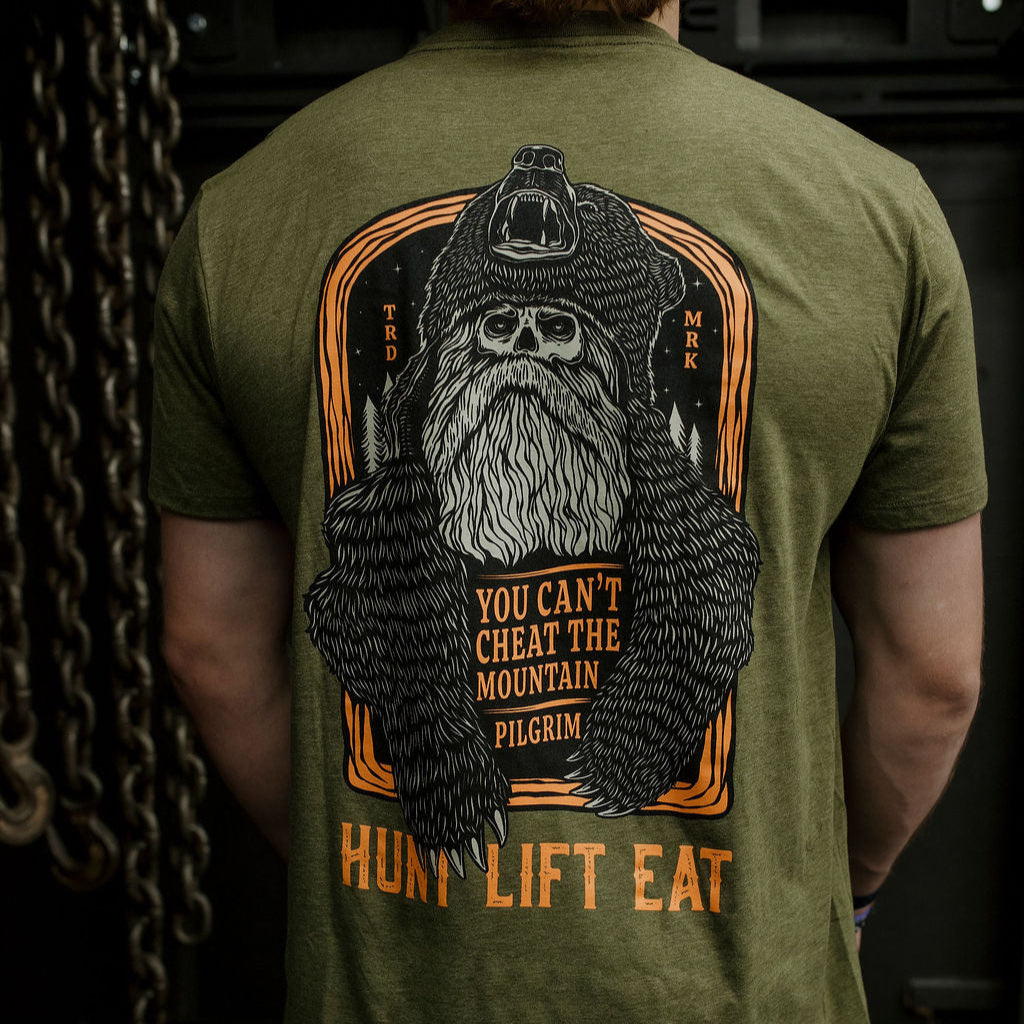

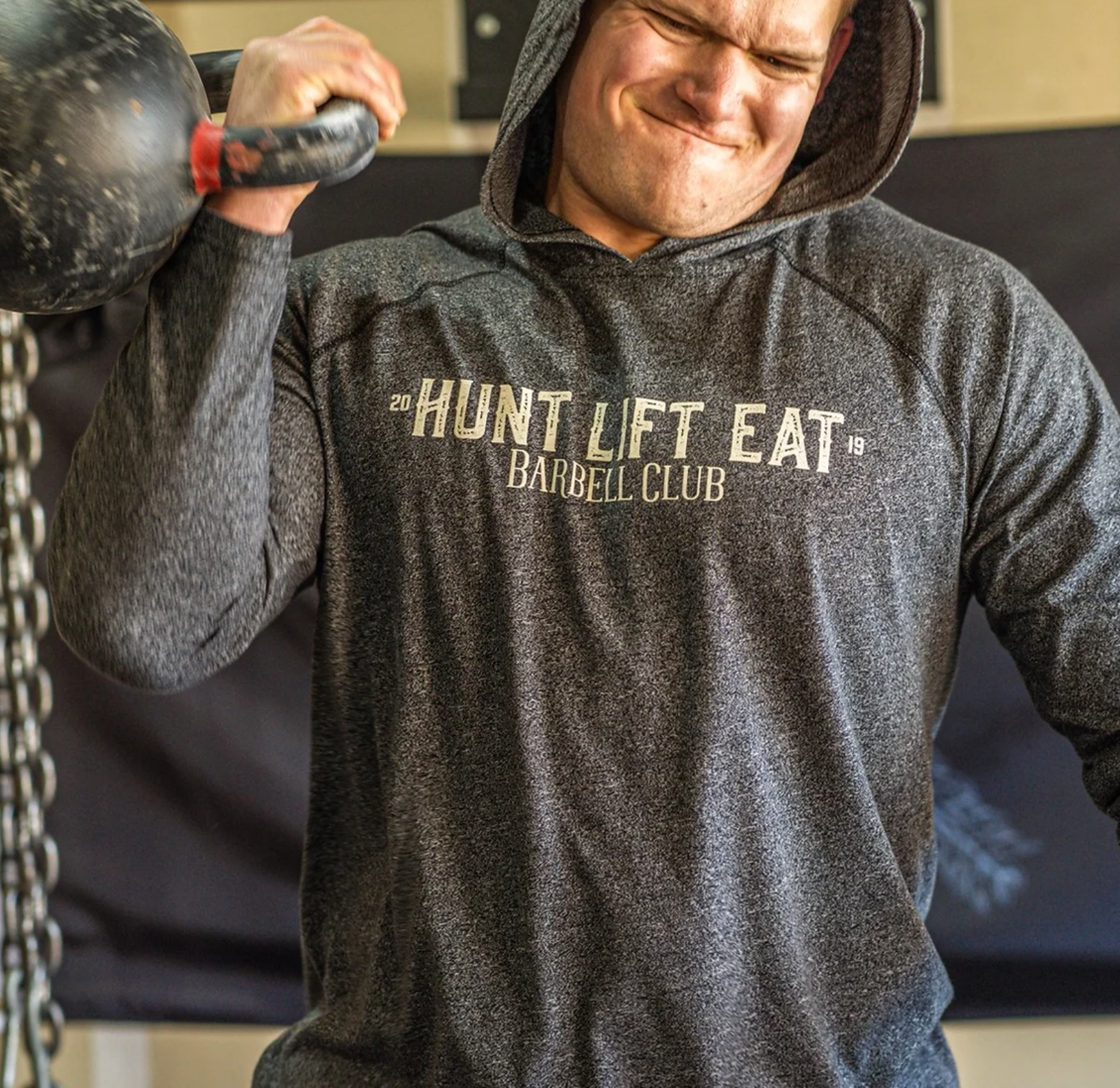
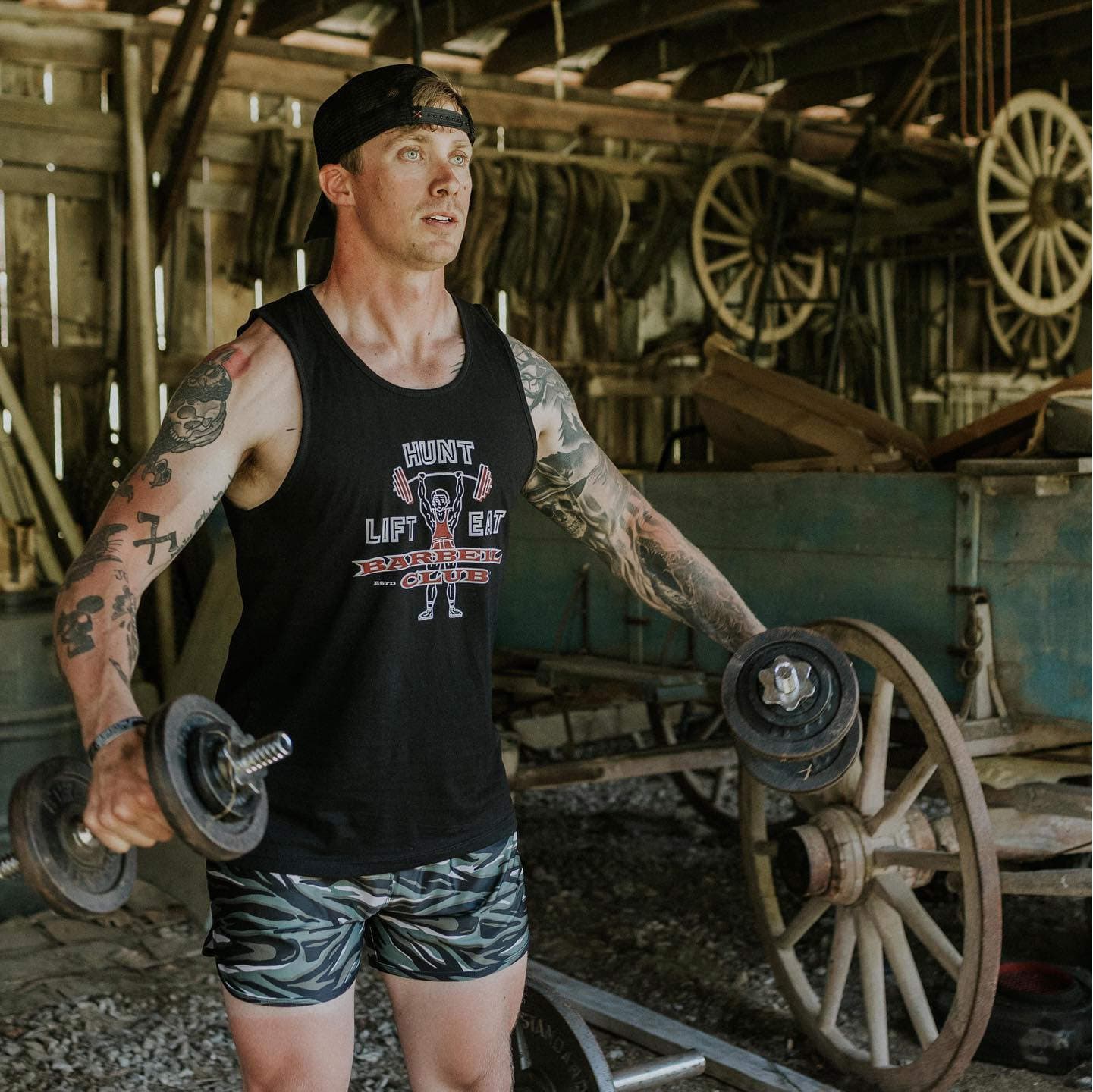
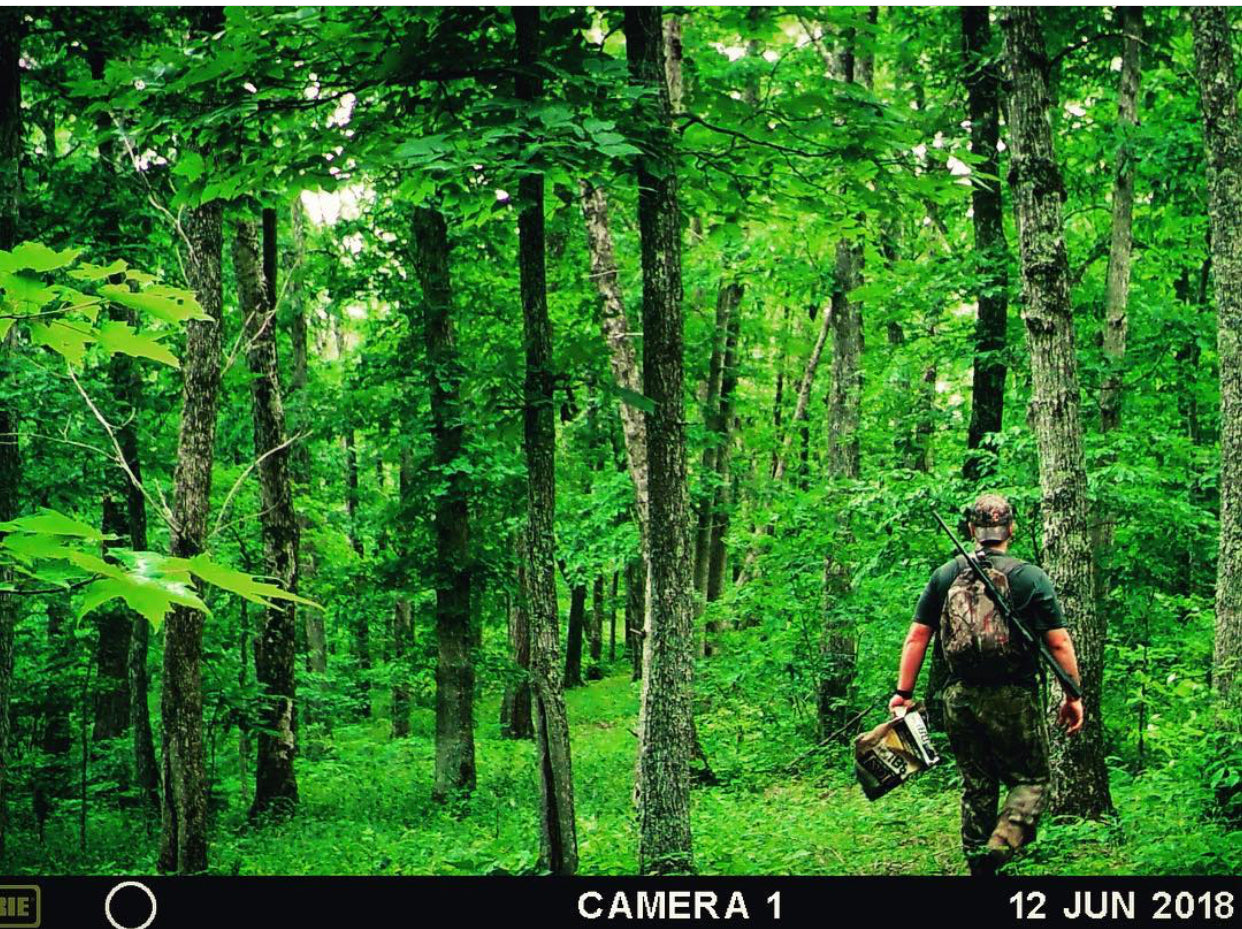
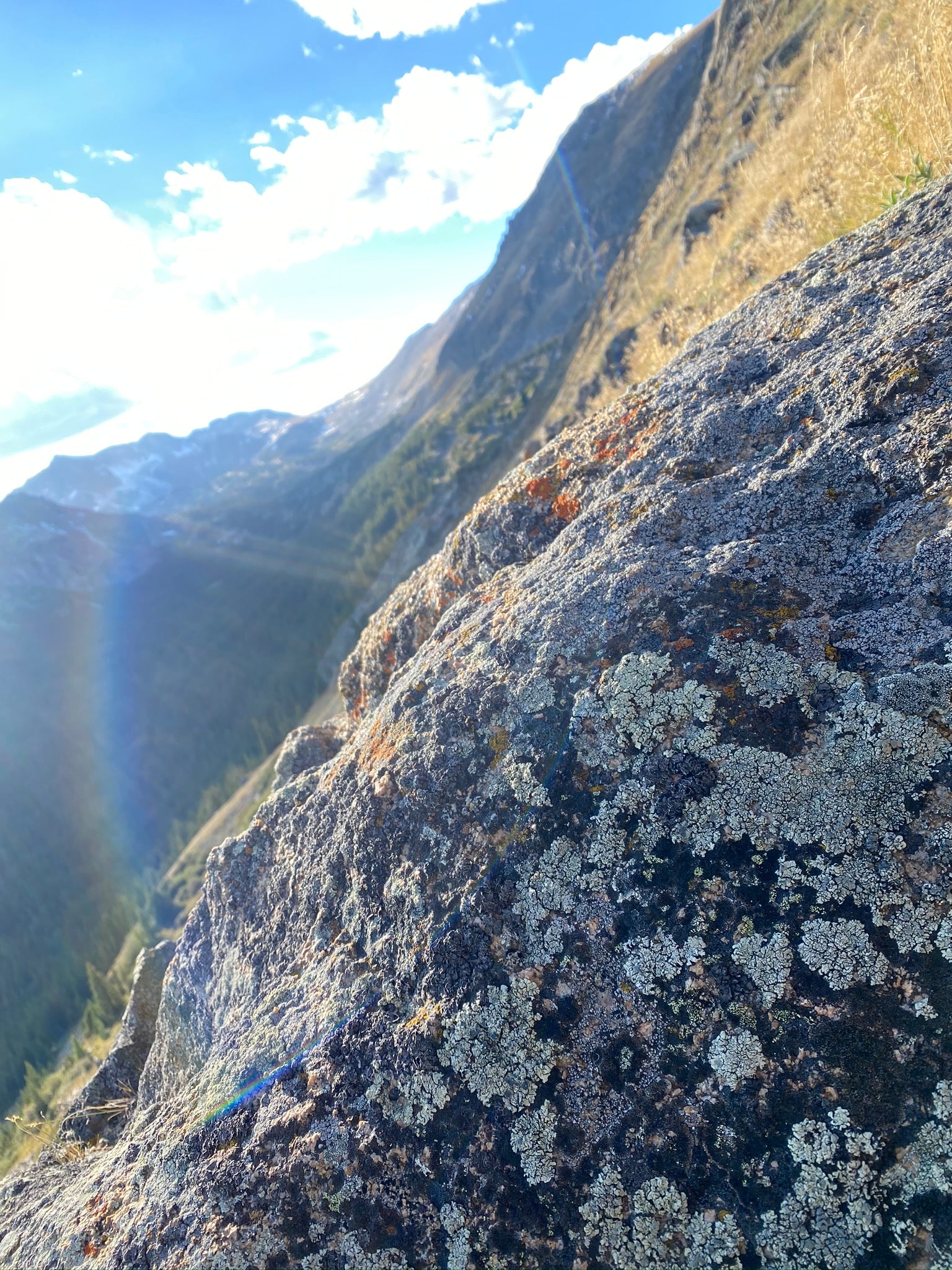
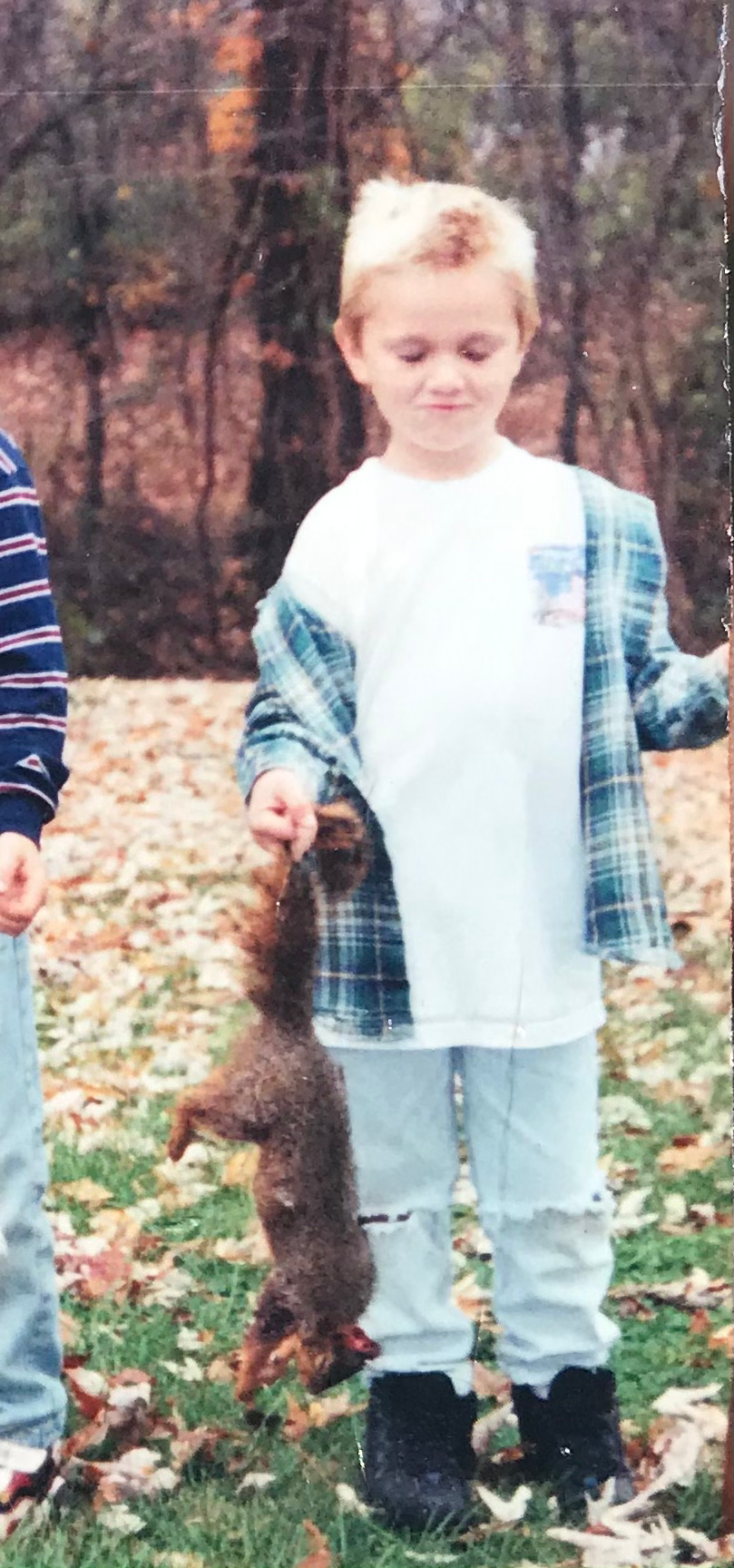
Leave a comment
This site is protected by hCaptcha and the hCaptcha Privacy Policy and Terms of Service apply.